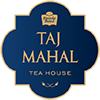Living The High Life with High Tea
- December 31 2021
- 0 Comment(s)
While we drink tea any time of the day in today’s era, a few historical traditions of tea drinking occasions are to-date etched in stone. Two of these are the universally accepted Afternoon Tea and Evening Tea events.
Over the years, these 2 traditions have evolved to become known as Low Tea and High tea respectively. Let’s just talk a bit about these famous tea traditions to understand them better.
As you may be aware the Tea drinking culture was passed on to us by the British who were very fond of their 'cuppa' and would normally start their day with one or have it along with their breakfast.
Especially during the summer months, when daylight was extended, the normal meal times were breakfast in the morning followed by lunch at noon and, post invention of electricity, dinner time prolonged to around 8 pm. As activity during summer months was quite hectic due to the salubrious weather, the aristocrats who would have already had their lunch by around noon, would start feeling hungry by around 4 pm and would crave for some immediate refreshment. However, as their staff would be busy doing other odd jobs or preparing dinner for the evening, the aristocrats could not depute them to do any elaborate cooking. Instead, the aristocrats came up with 'quick fix recipes' such as vegetable, meat or Jam sandwiches, readymade cakes, buns and, of course tea, to tide over their hunger pangs!
Hence, the concept of Afternoon Tea came into existence in the 19th Century and the creation of this tradition goes to the Duchess of Bedford, UK. As this mid-day event was held either in the garden or in the sunny lounge of a house on 'low' chairs such as sofas, couches or garden benches, this tea ceremony came to be known as 'Low Tea'. Further, as there was a dinner to be had later, the emphasis of this afternoon tea event was to keep it 'light' and refreshments were prepared accordingly. So, lighter teas such as Darjeeling black, Oolong, Green would be suitable for this occasion.

As far as the British working class was concerned, the situation was very different. The workers would come home after work in the evening and be famished. This was also the time when the worker could spend time with their spouse and children and go through the events of the day. Keeping in mind the famous saying 'The family that eats together, stays together', the entire worker’s family would sit on a 'high' dining table and eat a heavy meal. As electricity was expensive, the workers' family would aim to make this meal the last meal of the day so that the family could wind up and go to bed and hence cut down on lighting cost. As tea, milk and sugar was deemed to be nutritious, the worker’s family would add tea as a superfood to accompany the meal.
Hence, this late evening meal with tea got the name 'High Tea'. As the emphasis of this event would be to keep it heavy, and being the final meal of the day, the tea of choice would be a thick milky Assam type tea.
So, in summary, the Low Tea concept came from the British Aristocracy while the High Tea came from the British working class.
On this note, during your evening visit to Taj Mahal Tea House, do try our delicious High Tea Menu. The Food menu is packed with a wide variety of uniquely crafted delectable vegetarian or non-vegetarian nibbles and some cakes, scones to sweeten the deal. This all comes presented to you in an elaborate '3-layer plate stand' with the savoury items on the top and bottom plates while the sweet dishes tempt you from between!
The wide variety of items offered can be paired with any of our milky or non-milky teas to give you a completely satisfying evening tea experience and also improve the quality of your time spent with us.
We encourage you to experience the 'High Life' with us at Taj Mahal Tea House & invite you to join us for High Tea!






